Penang is a small tropical island off the west coast of peninsular Malaysia
Penang is a small tropical island off the west coast of peninsular Malaysia. It is a former British colony, so English is widely spoken. Its population is just over 700,000 with a majority of the people living in its capital, George Town. Penang is a multicultural island with about 60% of its inhabitants being Chinese, 32% Malays, and 7% Indian. Culturally it’s a mind-blowing place to live.
With a mix of these cultures, the food is touted to be the best in all of Southeast Asia. In 2014, Lonely Planet deemed Penang to be the top foodie destination to visit in the world. The most incredible food in Malaysia is not found in high-end restaurants, but at thousands of food stalls that serve one signature dish—often a family’s secret recipe passed down through generations.
Penang has been one of the top expat destinations in Malaysia for years. It is not a bustling city like Kuala Lumpur yet it still has all the comforts of home. There is everything from beaches and shopping to great food and a vibrant culture. You can go shopping at Gurney Plaza, or Queensbay Mall, and find the same high-end stores you would in the U.S. You can walk through the jungle, laze about on a secluded beach, take a food tour and a cooking class, or even drive a few hours to visit an Orangutan shelter.
George Town is a bustling, colorful UNESCO World Heritage City, which is fascinating to walk through. Its well preserved, colonial buildings and Chinese clan houses are living testaments to what life was like centuries ago. You can still feel its multi-cultural heritage as you wander through Chinese and Indian temples, and smell incense burning throughout the streets. Getting lost in the maze of narrow streets and alleyways makes you feel like you are in another world, one that existed long ago.
For a small island, there is no shortage of arts and culture to take part in; from the month long George Town festival that celebrates the arts in every form imaginable, the Jazz and World Music festivals, and the International Film festival. Add to that all of the inherent cultural and religious festivals, loads of art galleries with ever-changing exhibits, and the street art scene, and you’ll never be at a loss for something to do in Penang.
Retire in Penang
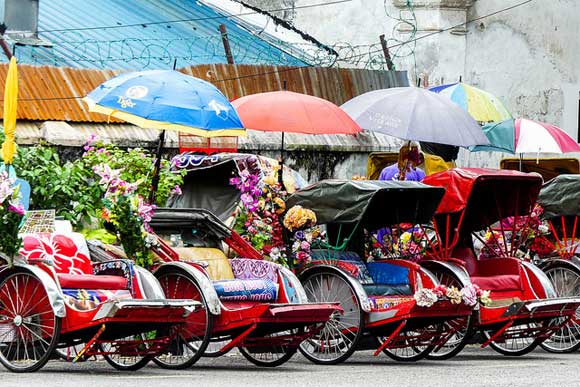
Taking the leap and retiring abroad is becoming more and more common. Cost and lifestyle are two of the most important aspects of moving to a new place. Can you afford to live there? Will your life be one that is exciting yet peaceful and afford you the retirement of your dreams? Can you live in a safe place with all the amenities that you want or will you have to forgo some creature comforts?
Retiring to Penang will not only give you the financial freedom you need but also provides you with a First World lifestyle. A couple can live here for $1,500 if you really watch your spending, but if you want to splurge and spend $2,500 you will feel like royalty.
You can have it all in Penang. Arts and culture, history and nature, beach and jungle. You can go shopping at a high-end mall with some of the same stores you’d have in the states. Or you can sit on the beach with a drink and relax. It’s really up to you.
There are tens of thousands of expats here so meeting them is pretty easy. A great way to meet new people is the expat mingles that occur almost monthly at different bars or restaurants. In general, expats are very friendly because they’ve already gone through the trials and tribulations of moving to a new country and are happy to share their answers and helpful tips with newbies. There are also many clubs/classes for people to join such as the International Woman’s Association, cooking classes, and even a classic car club.
In Penang, a great life can be had on a budget and you’ll never be bored. It has movie theaters with American films, spas, high-end malls where you can shop for days, restaurants, and modern living. It’s a First-World life on an affordable budget, with all the comforts of home.
Cost of Living in Penang
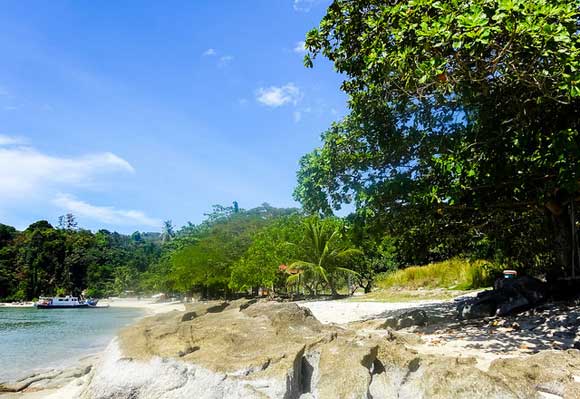
When looking for a place to retire, cost of living is the first concern for most. Many are on a fixed budget and want to live in a place that has all the comforts of home, without the same high costs. Penang, Malaysia is that place.
On $2,500 a month, a couple can live in luxury. Rent in a modern highrise with a pool, a gym, and security guards will cost between $750 and $800. While that may seem expensive, you’ll be getting a modern three-bedroom, three-bath, 2,300-square-foot condo with a balcony overlooking the ocean. If you don’t care to live with a view or by the beach, you can rent a nice two- or three-bedroom place for about $550 to $650—which means you could easily live on $2,000 a month or less.
By embracing the local way of living, you can cut your total monthly costs down even more. At the grocery stores and even at the restaurants, Western food is more expensive. If you eat native fruit, like mangos, papayas, and bananas, it’s much cheaper than the imported apples and oranges. Penang is famous for its food, with a distinct regional take on Thai, Malaysian, Korean, and Chinese food. Eat where the locals eat and you can’t go wrong. It’s safe for foreigners, delicious, and you can get a filling meal for less than $5.
The cost of healthcare is so low that very few expats have insurance so most people pay out of pocket. There are seven hospitals on the island so there are plenty of doctors and specialists to choose from. Most of them were trained in the U.K., U.S., or Australia, so their quality of care and standards are the exact same as they are in the Western world. And everyone speaks English so there are no worries about communicating.
If you have a little leftover pocket money, why not splurge and get a cleaning lady for $3.50 per hour, a pedicure for about $13, or even a foot massage for $18? With those prices, it’s almost ridiculous not to indulge!
Here’s a sample budget for a couple living in Penang:
| Expense | U.S. $ |
| Rent | $700 |
| Groceries | $191 |
| Electricity | $95 |
| Water | $10 |
| Cell phone | $10 |
| Internet and landline | $38 |
| Pay TV | $38 |
| Butane gas (for cooking) | $4 |
| Fuel for car | $32 |
| Maid (four hours a week) | $19 |
| Health insurance | $32 |
| Entertainment (eating out five nights a week, alcohol not included) | $286 |
| Monthly total | $1,455 |
Healthcare in Penang

For most people, there is really no such thing as affordable healthcare in the U.S. anymore. It is one of the many reasons people are moving out of the country to retire. There are plenty of countries to choose from to lower your healthcare costs, but it’s not just about the price. It’s about the quality of care as well.
Penang is a healthcare haven. For years, many people from surrounding countries, like Indonesia, Hong Kong, and Singapore, have gone there for affordable, first class care. It is already considered an up and coming area for medical tourism. In fact, more than 700,000 foreigners came to Malaysia last year for medical treatment.
All of the doctors speak English and most were trained in the UK, U.S., or Australia, so the standard of care is to Western standards. There are seven hospitals on the island to choose from so finding a doctor that suits your needs is pretty easy. Each hospital has its own specialists and you don’t have to wait for months to get in for a visit. Just go to the hospital, take a number and wait your turn. If you need to see another doctor, get an X-ray or scan, that also happens in the same day. A first-time doctor visit is about $20 to $65 with follow-up visits around $11 to $28. If you are admitted, the overnight stay will cost roughly $95 to $200 for a private room.
Dentistry in Penang is just as high quality as the doctors and surgeons there. Just like the doctors, most are schooled in the Western world and speak English. The technology is the same as it is in the U.S. so walking into the dentist’s office looks exactly the same as it does back home, but at a third of the cost.
Health insurance is available in Penang but with prices so low most expats pay out of pocket for their care. It is quick, efficient, and five-star quality for prices that are lower than what most people pay for their deductible.
Weather in Penang
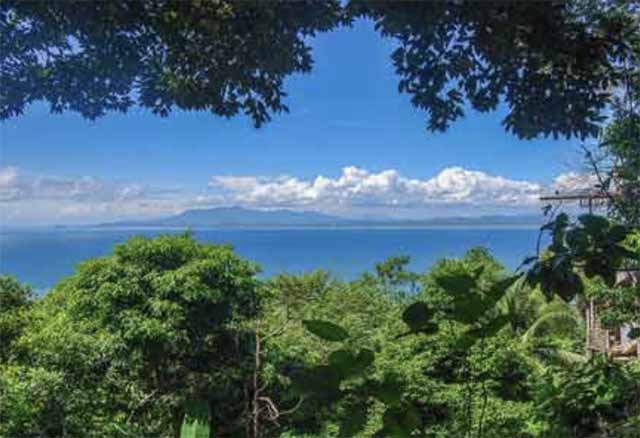
By Kirsten Raccuia
Penang is a little island off of the western coast of Peninsular Malaysia. It’s only a quick 45-minute plane ride from the nation’s capital, Kuala Lumpur and an hour from Singapore and Phuket, Thailand. In general, the weather is tropical; hot, humid, and rainy because Penang is just five degrees north of the equator. Counting on heat, humidity, and rain no matter when you plan on travelling will help prepare you for packing. Bring lots of cool, light layers, and an umbrella.
Although the climate is generally the same year-round, there will be some months that are hotter and wetter than others. A lot of times it only rains at night, with monstrous deluges that last for an hour then stop. Sometimes it will pour for an hour or so during daylight hours, but then the sun comes out and dries up everything, leaving no trace of the storm.
If you’re lucky to be staying somewhere with a good view of the seas, you’ll be treated to a light show like none other. Black clouds swiftly make their appearance known until half the sky it ominously darkened, dramatic lightning hits the water every couple of seconds until the skies open up and thrash down unceasingly. But, as quickly as it comes, it goes and the hot sun clears the skies leaving little evidence of the storm behind.
With constant heat and a good dose of humidity throughout the year, plan your day wisely. Go out early in the morning, find an air-conditioned place for lunch and to cool off, then head back out in the late afternoon for more sightseeing.
For most of the year, seven to eight hours of daily sunshine is the norm, so there is no bad time to visit.
Here is a guide by season to help you sort out the nuances and the best time for you to go.
Winter: December to January
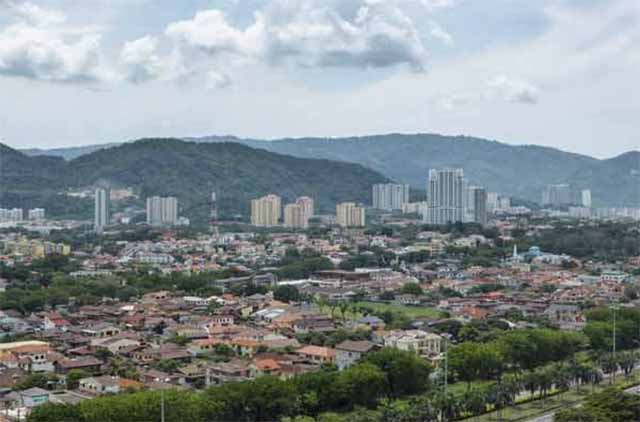
January and February typically bring blue skies and drier days making this a great time to visit Penang. Both months are considered the driest with less than nine days of rain each month and only three inches per month. December is a little more cloudy and rainy, it gets almost five inches of rain over an average of 12 days.
Although it is the driest season, the average humidity during this time is still upwards of 75% leaving the sense it is hotter than it is. With daytime temps up to 88 F and night-time temps averaging a comfortable 75 F, the consistent heat and the midday sun should be avoided if possible. There are plenty of air-conditioned attractions to visit as soon as the day starts to sear. Most of the cafes are cool and sitting with a drink and a good book for an hour or two is perfectly acceptable.
Spring: March-May

Spring marks the sign of the first and lesser of the two monsoon seasons. As these three months progress, more and more rain falls. March begins with around five inches of rainfall and rises to almost 10 inches in April and May with 12, 14, and 17 days of precipitation respectively. The storms are fleeting but can be intense, especially as May nears.
March is the hottest month of the year with temps raising up to 90 F but averaging around 84 F. With only one degree difference from winter, temperatures are almost the same, but the increased rains bring about higher humidity levels which start to peak at 82%.
Even though the temperatures are stable, the mugginess in the air means you’ll need a change of clothes if you plan to sightsee during the hottest hours of the day.
If you’re staying in George Town, try to choose a hotel with a pool for your midday cool down breaks; you’ll need them. Also, be sure to get a room with air-conditioning so you can duck out of the heat when need be.
Summer: June to August

The summer months have less rain than April and May making it another good time to visit. June through August averages between seven to eight inches of precipitation with 15 to 17 days of rain per month. The brief but substantial downpours usually occur in the mid to late afternoon, but the sun will come out again afterward.
The islands along the east coast of Malaysia (Redang, Perhentian, and Tioman) are practically rain-free during this time so if you’re looking for beaches, head to the east coast.
Again, the temperatures remain about 86 to 88 F in the midday and humidity stays around 81%.
Autumn: September to November
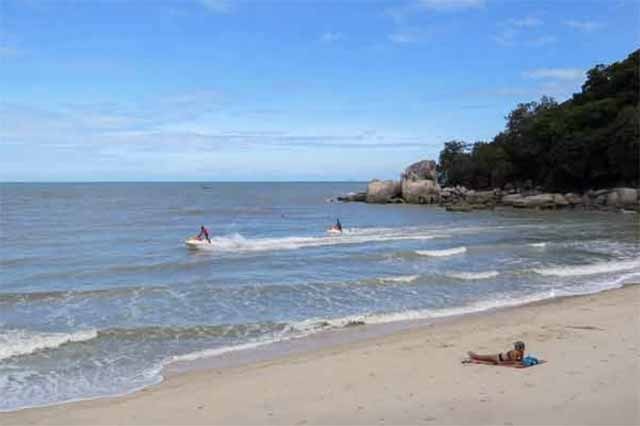
Autumn brings the second and more severe of the monsoon seasons. September and October are the wettest months with average rainfalls between 13 to 15 inches and 21 to 25 days of rain. Even with such heavy rains, the sun is never far behind so if you don’t mind the rain it is still a good time to come.
Although it is rainy, the average sunshine hours per day is between six and eight, not bad for a monsoon season. The hotels and airfares are often even more affordable during this time so plan accordingly and bring a raincoat and an umbrella. November is somewhat less rainy with about nine inches.
The temperatures remain the same, around 86 to 88 F, but the rains make it feel cooler temporarily.

